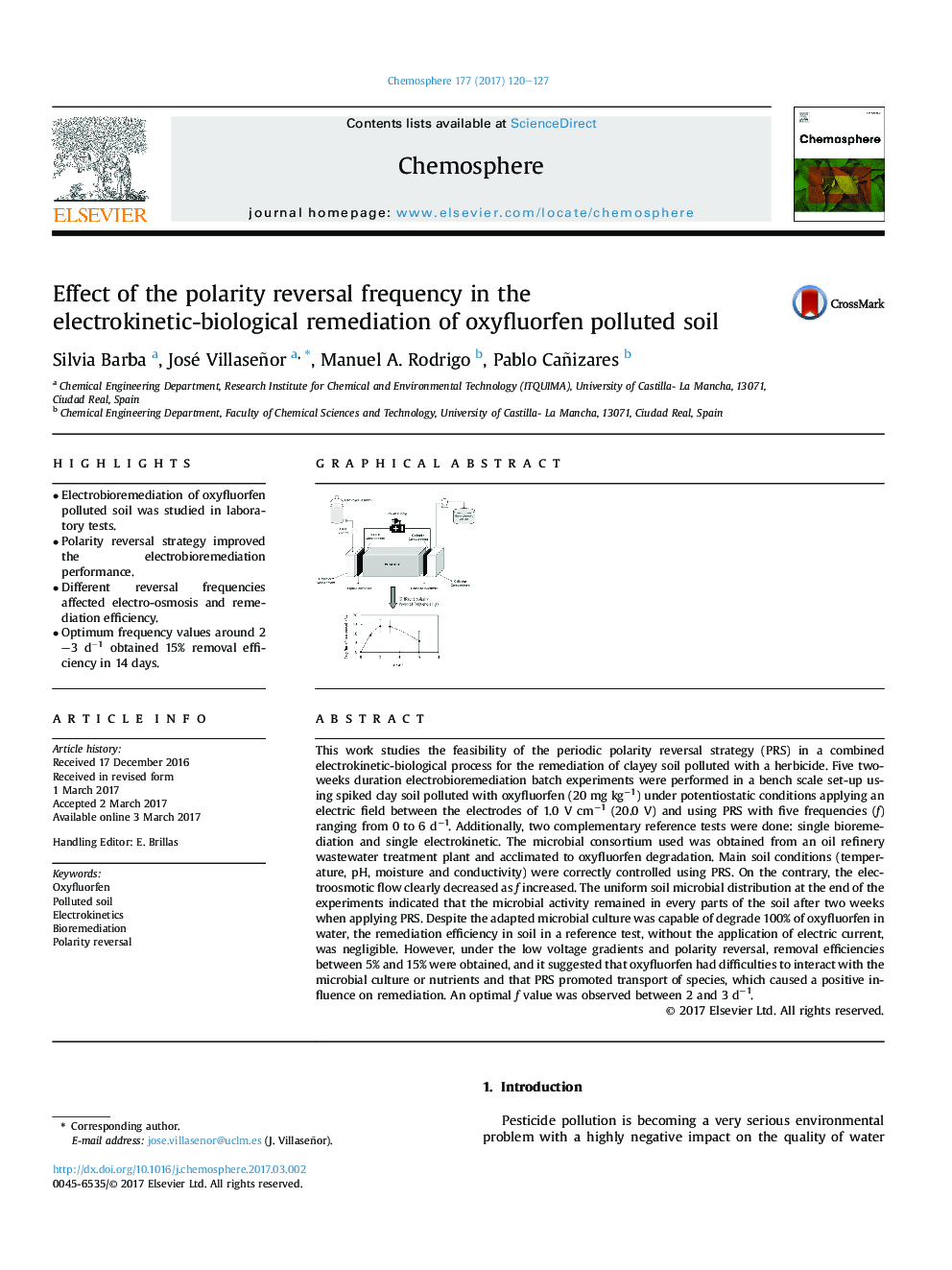| Article ID | Journal | Published Year | Pages | File Type |
|---|---|---|---|---|
| 5746310 | Chemosphere | 2017 | 8 Pages |
â¢Electrobioremediation of oxyfluorfen polluted soil was studied in laboratory tests.â¢Polarity reversal strategy improved the electrobioremediation performance.â¢Different reversal frequencies affected electro-osmosis and remediation efficiency.â¢Optimum frequency values around 2-3 dâ1 obtained 15% removal efficiency in 14 days.
This work studies the feasibility of the periodic polarity reversal strategy (PRS) in a combined electrokinetic-biological process for the remediation of clayey soil polluted with a herbicide. Five two-weeks duration electrobioremediation batch experiments were performed in a bench scale set-up using spiked clay soil polluted with oxyfluorfen (20 mg kgâ1) under potentiostatic conditions applying an electric field between the electrodes of 1.0 V cmâ1 (20.0 V) and using PRS with five frequencies (f) ranging from 0 to 6 dâ1. Additionally, two complementary reference tests were done: single bioremediation and single electrokinetic. The microbial consortium used was obtained from an oil refinery wastewater treatment plant and acclimated to oxyfluorfen degradation. Main soil conditions (temperature, pH, moisture and conductivity) were correctly controlled using PRS. On the contrary, the electroosmotic flow clearly decreased as f increased. The uniform soil microbial distribution at the end of the experiments indicated that the microbial activity remained in every parts of the soil after two weeks when applying PRS. Despite the adapted microbial culture was capable of degrade 100% of oxyfluorfen in water, the remediation efficiency in soil in a reference test, without the application of electric current, was negligible. However, under the low voltage gradients and polarity reversal, removal efficiencies between 5% and 15% were obtained, and it suggested that oxyfluorfen had difficulties to interact with the microbial culture or nutrients and that PRS promoted transport of species, which caused a positive influence on remediation. An optimal f value was observed between 2 and 3 dâ1.
Graphical abstractDownload high-res image (107KB)Download full-size image
